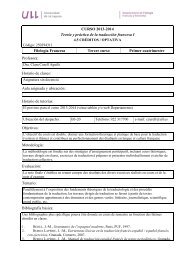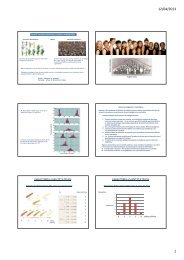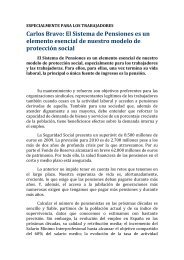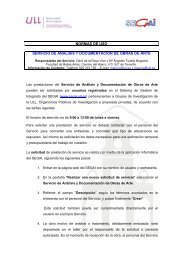20 CHAPTER 3 REVIEW OF CONJOINT ANALYSIS THEORY ...
20 CHAPTER 3 REVIEW OF CONJOINT ANALYSIS THEORY ...
20 CHAPTER 3 REVIEW OF CONJOINT ANALYSIS THEORY ...
Create successful ePaper yourself
Turn your PDF publications into a flip-book with our unique Google optimized e-Paper software.
letter A and a follow-up questionnaire were sent two weeks after the initial mailings. The<br />
letter served two purposes, (1) it thanked the individuals who had responded, and (2)<br />
reminded those who had not responded to do so as soon as possible because their<br />
participation are important for success of the study.<br />
One difficulty with mail questionnaires, is that not all respondents will answer all<br />
questions. Sections will be left unanswered resulting in incomplete questionnaires that<br />
cannot be used in the analysis. In addition, surveys will be “ not deliverable” because of<br />
“incorrect addresses”. Responses were received from 524 (15 % of sample) individuals.<br />
However, not all of the returned surveys were completed. Only 509 respondents returned<br />
a completed questionnaire for a 14.75 % useable response rate. Of the initial sample of<br />
3450 surveys, nine were undelivered.<br />
Model Specification<br />
Evaluation and measurement of product profiles in conjoint studies usually<br />
involves using either a metric scale or a non-metric scale to elicit consumer preferences.<br />
Methods that assume the dependent variable is of an ordinal scale are ranked ordered<br />
because they provide a non-metric ordering of respondents’ preferences. The interval<br />
rating method is used when metric measures of respondents’ preferences are obtained.<br />
The ranking format allows respondents to rank product profiles from most preferred to<br />
least preferred. The rating format asks respondents to indicate their preferences for<br />
several hypothetical products, which could results in two or more products receiving the<br />
same score. This ability to express order, indifference and intensity for different product<br />
profiles, allows for both cardinal and ordinal properties of utility to be examined.<br />
37















